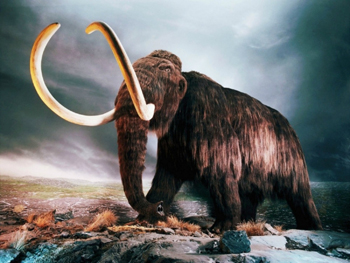 |
|
Scientists are currently working on three different approaches to restore lost plants and animals. In cloning, scientists use genetic material from the extinct species to create an exact modern copy. |
Within 15 years, scientists may be able to revive some recently extinct species, like the dodo or the passenger pigeon. It’s not Jurassic Park, but is it a good idea?
In the April 5 issue of Science, Stanford University law Professor Hank Greely identifies the ethical landmines of this new concept of de-extinction.
“I view this piece as the first framing of the issues,” said Greely, director of the Stanford Center for Law and the Biosciences. “I don’t think it’s the end of the story, rather I think it’s the start of a discussion about how we should deal with de-extinction.”
Greely lays out potential benefits of de-extinction, from creating new scientific knowledge to restoring lost ecosystems. But the biggest benefit, Greely believes, is the “wonder” factor.
“It would certainly be cool to see a living saber-toothed cat,” Greely said. “Wonder may not seem like a substantive benefit, but a lot of science—such as the Mars rover—is done because of it.”
Greely became interested in the ethics of de-extinction in 1999 when one of his students wrote a paper on the implications of bringing back wooly mammoths.
“He didn’t have his science right—which wasn’t his fault because approaches on how to do this have changed in the last 13 years—but it made me realize this was a really interesting topic,” Greely said.
Scientists are currently working on three different approaches to restore lost plants and animals. In cloning, scientists use genetic material from the extinct species to create an exact modern copy. Selective breeding tries to give a closely related modern species the characteristics of its extinct relative.
With genetic engineering, the DNA of a modern species is edited until it closely matches the extinct species.
All of these techniques would bring back only the physical animal or plant.
“If we bring the passenger pigeon back, there’s no reason to believe it will act the same way as it did in 1850,” said co-author Jacob Sherkow, a fellow at the Stanford Center for Law and the Biosciences. “Many traits are culturally learned. Migration patterns change when not taught from generation to generation.”
Many newly revived species could cause unexpected problems if brought into the modern world. A reintroduced species could become a carrier for a deadly disease or an unintentional threat to a nearby ecosystem, Greely said.
“It’s a little odd to consider these things ‘alien’ species because they were here before we were,” he says. “But the ‘here’ they were in is very different than it is now. They could turn out to be pests in this new environment.”
When asked whether government policies are keeping up with the new threat, Greely answers “no.”
“But that’s neither surprising nor particularly concerning,” he said. “It will be a while before any revised species is going to be present and able to be released into the environment.”
Greely and Sherkow recommend that the government leave de-extinction research to private companies and focus on drafting new regulations. Sherkow says the biggest legal and ethical challenge of de-extinction concerns our own long-lost ancestors.
“Bringing back a hominid raises the question, ‘Is it a person?’ If we bring back a mammoth or pigeon, there’s a very good existing ethical and legal framework for how to treat research animals. We don’t have very good ethical considerations of creating and keeping a person in a lab,” said Sherkow. “That’s a far cry from the type of de-extinction programs going on now, but it highlights the slippery slope problem that ethicists are famous for considering.”


